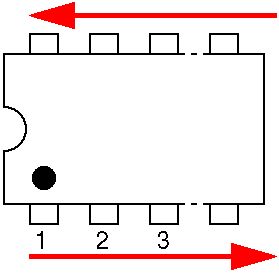Hackerman
User
Let's see if I can trace the pins on that mysterious K12 14 pin IC. I have done numerous searches to try to identify it and that logo is non-existent. If nothing else, I can log the data pin and see what it sends on startup. That should give us something.
Not that it really matters what chip it is but..... now it has my curiosity up and so I'll give it a shot.
This is all done utilizing the pics I loaded earlier in this thread so anyone can chime in on my mistakes any time they see one.
Pin 1 is no connection
Pin 2 is connected to 2 transistors and then to the fan ground
Pin 3 is no connection
Pin 4 is connected to a transistor and then to the signal relay that controls the induction heater circuit.
Pin 5 is no connection
Pin 6 is no connection
Pin 7 is connected to the LED pin 2 of 3
Pin 8 Ground
Pin 9 Vs
Pin 10 is connected to pin 5 on the 8 pin smd chip which is (Q Output)
Pin 11 is No Connection
Pin 12 is connected to the LED pin 1 of 3
Pin 13 is connected to the LED pin 3 of 3
Pin 14 is no connection
So, in short...
Pin 10 is the input pin reading data from the 8 pin smd ic.
Pins 7, 12 and 13 control the LED
Pin 2 controls the fan
Pin 4 controls the induction heater circuit.
There it is as best I see it.
Not that it really matters what chip it is but..... now it has my curiosity up and so I'll give it a shot.
This is all done utilizing the pics I loaded earlier in this thread so anyone can chime in on my mistakes any time they see one.
Pin 1 is no connection
Pin 2 is connected to 2 transistors and then to the fan ground
Pin 3 is no connection
Pin 4 is connected to a transistor and then to the signal relay that controls the induction heater circuit.
Pin 5 is no connection
Pin 6 is no connection
Pin 7 is connected to the LED pin 2 of 3
Pin 8 Ground
Pin 9 Vs
Pin 10 is connected to pin 5 on the 8 pin smd chip which is (Q Output)
Pin 11 is No Connection
Pin 12 is connected to the LED pin 1 of 3
Pin 13 is connected to the LED pin 3 of 3
Pin 14 is no connection
So, in short...
Pin 10 is the input pin reading data from the 8 pin smd ic.
Pins 7, 12 and 13 control the LED
Pin 2 controls the fan
Pin 4 controls the induction heater circuit.
There it is as best I see it.
Last edited:






 That is part of the fun with this, different ways to use, bit like the Vapcap.
That is part of the fun with this, different ways to use, bit like the Vapcap.


